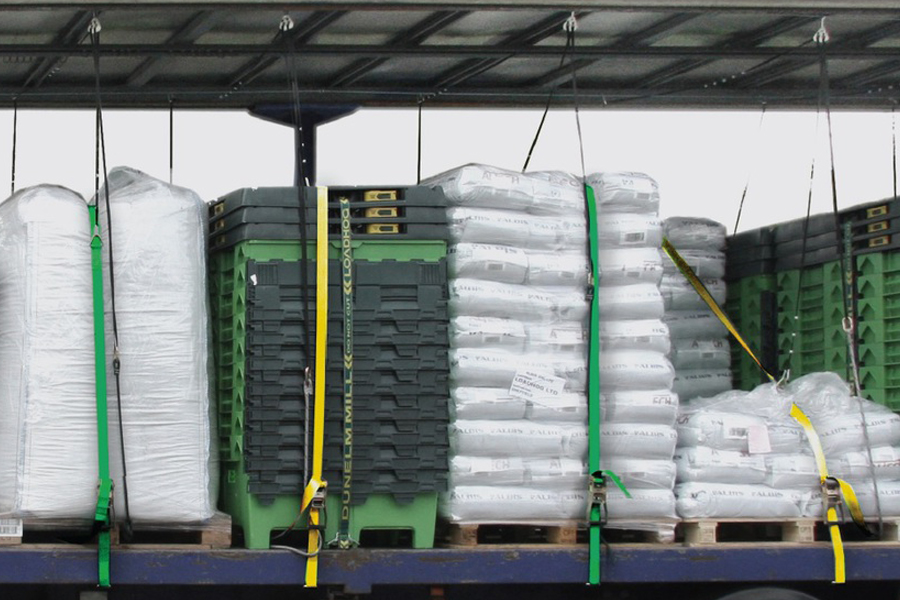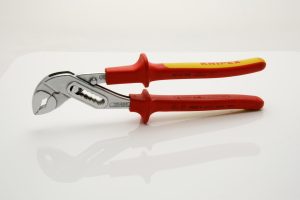Ask any haulage company, and they’ll tell you the importance of using load restraints on their vehicles.
However, this isn’t a pre-requisite only limited to commercial truckers. Anyone who transports goods at the back of their vehicles must make use of these.
Not only is safe loading crucial in preventing damage to property—but also injury to people.
That’s why in certain countries—Australia included—there are laws against driving a vehicle carrying a load which isn’t properly secured. After all, it’s a simple task given the number of tie-down straps that are readily available.

IS IT REALLY NECESSARY?
If your cargo is arranged properly and seems stable, additional fasteners aren’t necessary, right? Not exactly. In a recent three-year survey, it was found that over 200,000 thousand crashes occurred as a result of unsecured cargo. This is likely to occur in such instances:
- Heavy cargo not secured might fall from vehicles onto other vehicles or pedestrians.
- A driver faced with a falling load may swerve in an attempt to avoid the falling items.
- If unfortunately, the fallen cargo consists of liquids or oils, skids may occur as a result of these spillages.
- Vehicles may overturn because of shifting loads, particularly when turning.
LOAD RESTRAINT AND THE LAW
As mentioned earlier, it’s an offense when vehicles transport heavy loads without taking the necessary precautions as stipulated in the Load Restraint Guide. To avoid being on the wrong side of the law, it’s in your best interest to ensure the following:
- Your loads must be secured in such a way that no load movement occur regardless of the driving and weather conditions.
- However, you decide to arrange your cargo it must be in such a way that your vehicle isn’t unstable or unsafe.
- Unfortunately using any vehicle to transport your load simply won’t cut it. You have to make sure you use a suitable vehicle for your load type.
The above list is just a few of the numerous precautions you can take to ensure you and your load reach the intended destination safely.
To make sure you stay safe, let’s help you pick the correct tie-down straps.
WHAT TO CONSIDER BEFORE PICKING A TIE DOWN STRAPS
HOW MUCH WEIGHT CAN THEY HANDLE?
The last thing you need is picking straps that’ll snap during your journey.
This is why the first thing you need to do is calculate the working load limit (WLL) of the ratchet tie down strap assembly. Each strap has a WLL that’ll give an indication of how much weight the strap can handle.
Tip: Ideally you want to use a high enough strap rating which is equal to the cargo loading weight. For accurate measurements, you can check with your industry standard.
HOW LONG ARE THEY?
The length of the straps is also important. Straps that are too short are unlikely to go over your load so you won’t be able to fasten them at all. Straps that are too long won’t work either because the remaining loose portion will be a hindrance during the journey.
Tip: If the straps are too long you can purchase housing and wrappers which will allow you to reel in the remaining portion.
TYPES OF FASTENERS
Each load restraint device utilizes a different mechanism for fastening. This can either be the ratchet or buckling system. Generally, the ratchet system will give you a better mechanical advantage by giving you the leverage you need to tighten your load.
Tip: If you happen to have longer straps you can opt for the retractable ratchet straps as they come with a housing that contains the remaining strap.
MATERIAL
These straps come in different materials, and the durable one is the one you want. Most of these straps feature metal parts, and this is the portion you need to give special attention to. This is because these parts aren’t only made with varying coatings but different levels of quality.
While the cheaper options may seem appealing, you need to invest in the premium products. You won’t have to replace them frequently. Ultimately this will save you a lot of money in the long run.
Generally, restraints constructed using heavy duty or high cycle applications are ideal. Tie downs made with consumer grade products, though a good option, will not hold up as well as their heavy-duty counterpart.
Tip: Request the heavy-duty cycle rated ratchets, straps or winches.
HARDWARE
Apart from the material used you also need to consider the additional reinforcements attached. These will only make the load more secure. The hardware includes anything from D-rings, wire or flat hooks. Just make sure the hardware you decide on suits the load you want to carry.
Tip: Pick the hook that works with your car.
FINAL WORDS
Most of the load restraint accidents occur between 40 and 60km/h and after driving only a short distance. The tie downs you need will depend on the type of cargo you plan on transporting. Ultimately the one you pick must be for the appropriate load—be it heavy or medium.
So why not be a responsible driver and secure that load? This is to ensure the safety of everyone on the road.





